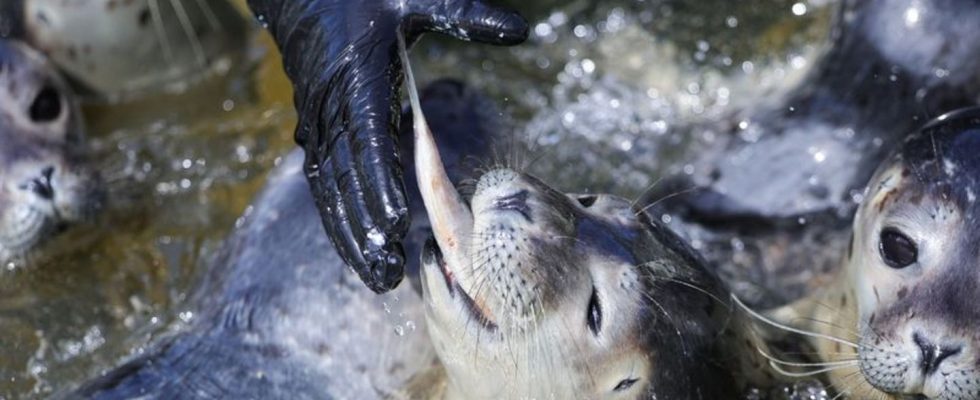Animals
High season: seal stations are very busy
The manager of the seal sanctuary feeding the howlers in the seal sanctuary. photo
© Christian Charisius/dpa
The birthing season for seals in the Wadden Sea is in full swing. Young animals separated from their mothers are nursed in two German seal stations.
With the high phase of seal births in the Wadden Sea, the animal keepers of the two German seal stations the busiest time of the year. At the stations in Norddeich in Lower Saxony and Friedrichskoog in Schleswig-Holstein, more than 260 young seals are currently being nursed.
Cubs separated from their mothers shortly after birth are called howlers. The main birthing phase is from mid-June to mid-July. “We just survived the mountain festival, so to speak,” said the head of the Norddeicher station, Peter Lienau, of the German Press Agency.
Release of the first young at the beginning of August
There are currently 111 young seals being reared at the station in Norddeich in East Frisia, and 153 in Friedrichskoog. There, “Manu”, the first howler of the season was released back into the wild after only seven weeks – earlier in the summer than any howler before him. “Manu” was found prematurely on Hallig Hooge on May 17, when the animal weighed only 9.4 kilograms. In Norddeich, the first young animals are to be released into the wild at the beginning of August. “Django” was the first howler recorded there this year on May 27 – weighing just 9.3 kilograms.
Orphaned young animals are cared for by the animal keepers until they weigh at least 25 kilograms when released into the wild. In the Wadden Sea, young seals are actually nursed and raised by their mothers for around four to five weeks, explained animal keeper Tim Fetting. When the mother animals search for food in the water, the young animals are briefly left on the beach. They are only considered howlers if they are permanently separated from their mothers as a result of disturbances. “We have to replace the mother,” said Fetting.
The weakened baby seals are first fed a salmon emulsion as a breast milk substitute via a soft silicone tube. The first whole herring is then eaten eight days after the intake. Most of the animals in the Norddeicher station currently eat around one and a half kilograms of fish a day. Before it is released into the wild, it weighs three to four kilograms. Animal keeper Fetting said that how quickly the howlers feed on fat in the stations varies from animal to animal. In Norddeich it takes an average of 65 days before an animal can be released back into the wild.
Lots of work for staff
Rearing the baby seals means a lot of work for the animal keepers, veterinarians and volunteers in the stations: In Norddeich they are fed four times a day – the tanks also have to be cleaned regularly and the seals examined and weighed. “We’ve had a really tough season this season,” said Fetting. “But we are still full of energy and are working towards the reintroduction.”
The seal station in Friedrichskoog was opened in 1985, in East Friesland the rearing of seals began in 1971. Both are national park houses and, according to an international agreement, the only authorized reception centers for howlers in Germany.
The birth and suckling season of seals in the Wadden Sea lasts until August. The birthplaces and berths in the national park are usually in protection zone 1 and may not be entered. People should keep as far away from seals as possible so as not to disturb the wild animals.

